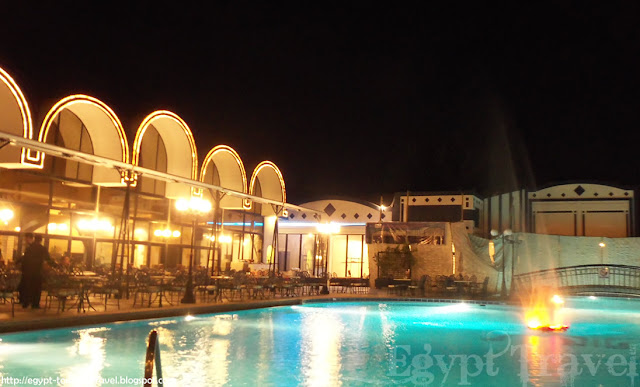Old Cairo is that part of Cairo which contains the remnants of old cities that were capitals before Cairo. This part of the city is home to many tourist attractions like the Hanging Church(El Muallaqa), the Coptic Museum and the remains of an old Roman Fortress.
During our trip to Old Cairo, we visited the Hanging Church (Saint Virgin Mary's Coptic Orthodox Church) which is one of the oldest churches in Egypt. The church is called the 'Hanging Church' because the approach to the main body of the church is suspended over a passage.
There is a narrow courtyard in the front which is decorated with beautiful biblical designs. The mosaic art work depicts the Holy story and are very interesting.
There are 29 steps leading to the church. The church facade features twin bell towers. The interiors are wonderfully maintained for such an old church. The intricately carved walls, doors and windows, the wooden carved ceiling and the hanging lights - everything is so beautiful.
There is a section in the church where there is a glass floor and you can see the remains of the Roman fort's foundations. Entry to the church is free and there is no one to hassle you. No vendors. You can spend your time peacefully and take in the beauty of the church at your own pace. The church still holds services and at such times visitors/tourists may not be allowed inside. There are 110 holy icons inside the church with the oldest dating back to the 8th century.
According to me the Hanging Church is the most interesting of attractions in Coptic Cairo. It looks quaint and old-world from the outside and from the inside - it is even more beautiful. Definitely worth visiting. A day's visit covered the Hanging Church, the Mosque of Muhammad Ali(the Albaster Mosque) and the Khan-el-Khalili market with enough time to spend at all the places.
During our trip to Old Cairo, we visited the Hanging Church (Saint Virgin Mary's Coptic Orthodox Church) which is one of the oldest churches in Egypt. The church is called the 'Hanging Church' because the approach to the main body of the church is suspended over a passage.
There is a narrow courtyard in the front which is decorated with beautiful biblical designs. The mosaic art work depicts the Holy story and are very interesting.
There are 29 steps leading to the church. The church facade features twin bell towers. The interiors are wonderfully maintained for such an old church. The intricately carved walls, doors and windows, the wooden carved ceiling and the hanging lights - everything is so beautiful.
There is a section in the church where there is a glass floor and you can see the remains of the Roman fort's foundations. Entry to the church is free and there is no one to hassle you. No vendors. You can spend your time peacefully and take in the beauty of the church at your own pace. The church still holds services and at such times visitors/tourists may not be allowed inside. There are 110 holy icons inside the church with the oldest dating back to the 8th century.
According to me the Hanging Church is the most interesting of attractions in Coptic Cairo. It looks quaint and old-world from the outside and from the inside - it is even more beautiful. Definitely worth visiting. A day's visit covered the Hanging Church, the Mosque of Muhammad Ali(the Albaster Mosque) and the Khan-el-Khalili market with enough time to spend at all the places.


















































